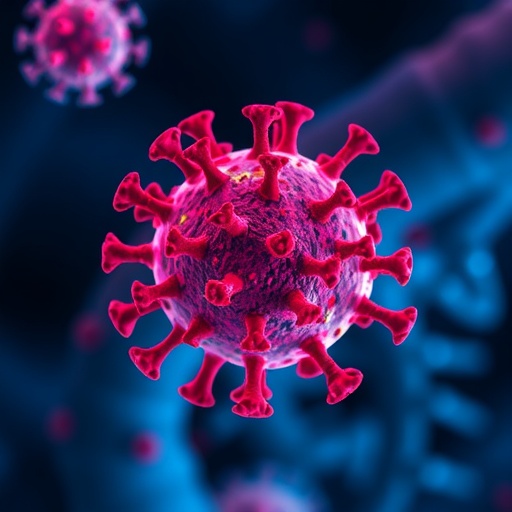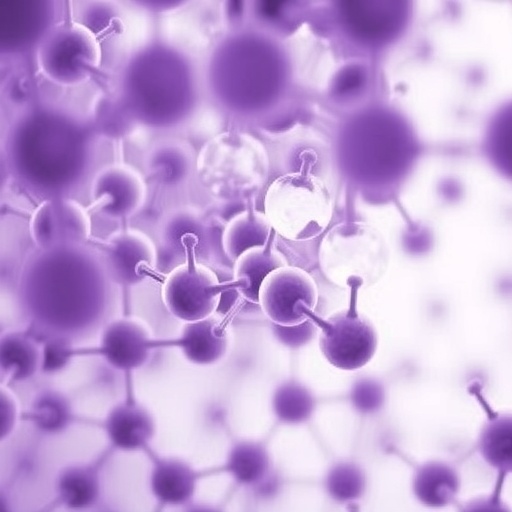In the ongoing battle against SARS-CoV-2, the need for an advanced understanding of the virus’s interaction with the host immune system is becoming increasingly urgent. Researchers are continuously exploring how viral components, particularly the spike protein, function in the modulation of host inflammatory responses. In a recent study, Prakasam, Shenoy, and Abdul Salam delved into the structural aspects of Toll-like receptor 4 (TLR4) activation by the SARS-CoV-2 spike protein. The implications of their findings span across significant areas of immunology and virology, bringing forth insights that could revolutionize therapeutic strategies.
The spike protein of SARS-CoV-2 has garnered significant attention due to its crucial role in virus entry into host cells. This glycoprotein is the primary target for neutralizing antibodies following infection or vaccination. However, beyond its role in viral entry, emerging evidence suggests that the spike protein can also engage immune receptors, particularly TLR4, leading to altered inflammatory responses. The study conducted by the authors aims to elucidate these complex interactions by providing detailed structural insights into how the spike protein influences TLR4 signaling pathways.
The TLR family is a group of receptors that play a pivotal role in the innate immune system. They are designed to detect pathogenic components, thereby triggering immune responses. Among them, TLR4 is well-known for recognizing lipopolysaccharides and activating pro-inflammatory pathways. The interaction between TLR4 and viral proteins is a relatively novel area of research, one that could have substantial implications for vaccine design and therapeutic interventions. By analyzing the structural characteristics of this interaction, researchers hope to identify potential intervention points that could mitigate inflammation and tissue damage caused by excessive immune responses.
Notably, this study employs advanced structural biology techniques, including cryo-electron microscopy and X-ray crystallography, to visualize the TLR4-spike protein complex at an atomic level. By capturing high-resolution images, the researchers could pinpoint specific binding sites and conformational changes that occur upon interaction. Such detailed structural data is crucial for understanding not just how the spike protein engages TLR4, but also how this engagement leads to the activation of downstream signaling pathways that result in inflammatory responses.
The findings of Prakasam and colleagues indicate that the binding of the spike protein to TLR4 could promote a state of hyper-inflammation. This is particularly significant given that various studies have implicated hyper-inflammatory responses in the pathogenesis of severe COVID-19. When TLR4 becomes activated, it initiates a cascade of signaling events that can lead to the production of pro-inflammatory cytokines. In cases of SARS-CoV-2 infection, excessive cytokine release can result in a cytokine storm, potentially causing severe pulmonary damage and multi-organ failure.
Furthermore, the study highlights how structural insights into TLR4 activation by the spike protein could guide the development of new therapeutic strategies. If specific regions of the spike protein can be targeted to prevent TLR4 activation, it may be possible to reduce the risk of hyper-inflammatory complications during infection. This could be particularly beneficial for immunocompromised individuals or those at greater risk of severe COVID-19 outcomes. Therapeutics that mitigate the interaction between spike protein and TLR4 may offer protective benefits without compromising the overall immune response needed to eliminate the virus.
The authors also adroitly discuss the potential implications for vaccine development. Understanding the structural nuances can help inform the design of vaccine candidates that not only elicit robust antibody responses but also modulate TLR4 signaling in a beneficial manner. Moreover, this knowledge could pave the way for adjuvants that enhance the immunogenicity of vaccines while controlling excessive inflammation during the immune response.
As the study unfolds, it becomes clear that the research on TLR4 and its interaction with the SARS-CoV-2 spike protein is not just an academic exercise; it holds significant real-world implications. If researchers can harness this interaction, it may lead to the discovery of novel therapeutic avenues for COVID-19 and similar diseases. Moreover, the findings emphasize the importance of continued research into viral-host interactions, particularly in a time when zoonotic viruses pose a greater threat to global health.
In summary, the structural insights provided by Prakasam, Shenoy, and Abdul Salam mark a critical step forward in deciphering the complex interactions between SARS-CoV-2 and the host immune system. As the world grapples with the repercussions of the pandemic, understanding TLR4’s role in mediating the inflammatory responses induced by viral proteins could play a crucial role in shaping future therapies and vaccines. This multifaceted approach underscores the necessity for a comprehensive understanding of how viral components coordinate immune responses to optimize medical interventions in the fight against COVID-19.
In conclusion, further research is needed to expand upon these findings, delve deeper into the molecular mechanisms at play, and ultimately translate this invaluable knowledge into practical, life-saving strategies. Given the dynamic interplay between viruses and host responses, innovative approaches are essential to stay two steps ahead of emerging pathogens. The research conducted by Prakasam et al. serves as a powerful reminder that interdisciplinary collaboration across the fields of immunology, virology, and structural biology is vital. As new insights continue to unfold, the scientific community remains hopeful that lessons learned from this pandemic will forge a stronger and more resilient health care framework for future generations.
Through a concerted effort in research and application, the scientific community is poised to turn tides in not just the COVID-19 pandemic but in the broader field of infectious diseases, ensuring a more agile and effective public health response.
Subject of Research: Interaction of SARS-CoV-2 spike protein with TLR4 and its implications for inflammatory response modulation.
Article Title: Structural insights into TLR4 activation by SARS-CoV-2 spike protein: implications for inflammatory response modulation.
Article References:
Prakasam, P., Shenoy, T.N., Abdul Salam, A.A. et al. Structural insights into TLR4 activation by SARS-CoV-2 spike protein: implications for inflammatory response modulation. Mol Divers (2025). https://doi.org/10.1007/s11030-025-11347-8
Image Credits: AI Generated
DOI: 10.1007/s11030-025-11347-8
Keywords: TLR4, SARS-CoV-2, spike protein, inflammation, immune response, cytokine storm, vaccine development.
Tags: COVID-19 research and immune responseglycoprotein function in virologyhost immune response modulationimmune system interactions with virusesimplications of spike protein in immunologyinflammatory responses and viral proteinsinnate immune system and TLR familyneutralizing antibodies and SARS-CoV-2SARS-CoV-2 spike protein TLR4 activationstructural analysis of viral proteinstherapeutic strategies for viral infectionsToll-like receptor 4 signaling pathways





